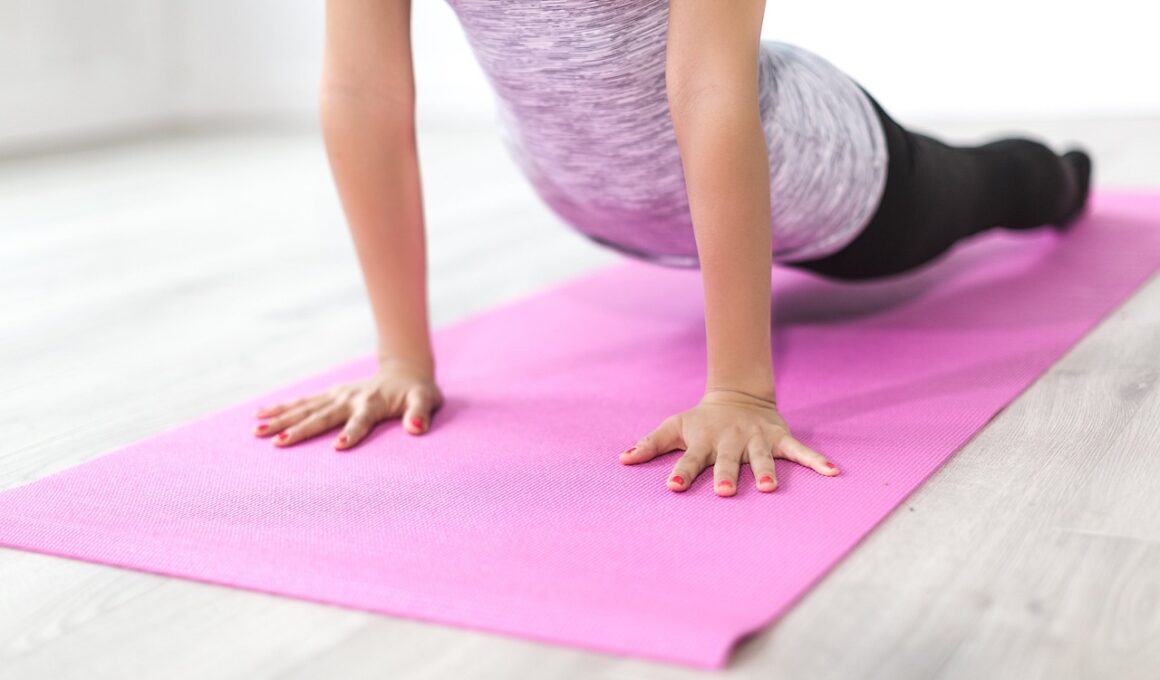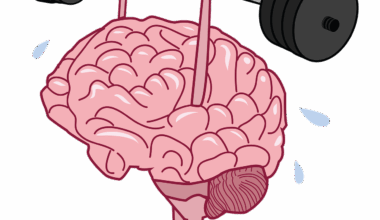Using Resistance Training to Improve Posture and Balance
Posture and balance are crucial for maintaining overall health and preventing injuries. Resistance training can play a significant role in enhancing these aspects. By strengthening muscles and increasing stability, resistance exercises can correct postural imbalances and improve coordination. Muscle strength contributes to better posture, reducing the risk of slumping or hunching over. Proper alignment in standing and sitting positions is essential for daily activities, and resistance training helps achieve this. Additionally, balance is improved through the engagement of core muscles, which are fundamental for maintaining stability during movement. Resistance exercises targeting the legs, core, and back also promote joint stability, allowing for better control during dynamic movements. Functional training, which mimics everyday activities, can further enhance balance performance in real-life scenarios. Benefits include increased confidence and ability to perform daily tasks without fear of falling. This approach leads to improved overall quality of life, especially for older adults. As one continues to engage in resistance training, the benefits extend beyond physical appearance, positively influencing emotional health and body awareness.
Incorporating resistance training into a fitness regimen can yield substantial benefits for posture and balance. Begin with basic exercises tailored for beginners focusing on form and technique. Emphasis on proper alignment and body mechanics is essential to avoid injuries during workouts. Exercises such as squats, lunges, and deadlifts are effective in strengthening the necessary muscle groups. Resistance bands and free weights can serve as excellent aids in performing these exercises, providing an adjustable level of difficulty. Gradually increase the weight or resistance to continue developing strength and endurance. Furthermore, incorporating functional movements will not only enhance muscular strength but also improve coordination and stability. Balance exercises, like single-leg stands or stability ball workouts, complement resistance training. They engage core muscles, critical for maintaining an upright posture during daily activities. Practicing yoga or Pilates alongside resistance training can further enhance flexibility and body awareness. It’s important to approach these exercises with consistency and patience. Scheduling regular workouts, ideally three times a week, is essential for lasting improvements. Tracking progress through journals or apps can provide motivation and indicate areas needing additional focus.
While resistance training offers numerous advantages, understanding the principles behind it is crucial for maximizing benefits. Progressive overload involves gradually increasing the weight, frequency, or intensity of exercises over time, which fosters continuous improvement in strength and coordination. When engaging in resistance training, it is vital to maintain a balanced workout routine. Targeting multiple muscle groups effectively helps create symmetry in strength, further contributing to better posture and balance. It’s also imperative to include mobility and flexibility work within the regimen, as this can prevent stiffness resulting from muscle tightness. Adequate recovery between training sessions is as crucial as the workouts themselves, allowing muscles to repair and grow stronger. Nutrition also plays a pivotal role in recovery, with a focus on protein intake for muscle repair and growth. Equally important is hydration, as it impacts overall physical performance and recovery. For people looking to improve posture and balance through resistance training, working with a certified trainer is highly beneficial. They can help in developing a personalized program that considers individual needs, fitness levels, and progress. Adaptability is key, ensuring continued growth and development even when obstacles arise.
Benefits of Resistance Training
The benefits of resistance training extend well beyond strength enhancement; they encompass essential factors such as mental health and functional independence. Mental well-being often improves as individuals engage in regular physical activity, leading to reduced stress and anxiety levels. Exercise stimulates the release of endorphins, the body’s natural feel-good hormones. Moreover, accomplishing training goals boosts self-esteem and confidence, positively impacting body image. Improved posture can alleviate discomfort resulting from musculoskeletal issues, further enhancing quality of life. Functional independence, especially among seniors, helps in maintaining an active lifestyle. As muscle mass and balance improve, daily activities such as climbing stairs or carrying groceries become more manageable. Resistance training enhances core strength, which directly supports spinal alignment, reducing back pain—an increasingly common challenge among older adults. Chronic pain can significantly hinder mobility and overall physical performance. Thus, engaging in resistance training mitigates its ill effects. All these benefits combined emphasize the importance of embracing a regular resistance training program. Furthermore, fostering social interactions within fitness environments can create support systems, enhancing accountability and enjoyment as participants share experiences and encourage one another.
Adopting resistance training not only aids in improving posture and balance, but it also contributes to injury prevention and rehabilitation. Strengthening weak muscle groups is pivotal in correcting postural discrepancies that can lead to injuries. In many cases, individuals unaware of their poor posture and alignment may develop injuries over time. Integrating resistance training helps to address these problems proactively by strengthening not only the muscles directly associated with posture but also those that support joint stability. For individuals recovering from injuries, resistance training becomes an essential component of rehabilitation programs. Customization allows professionals to target rehabilitation efforts based on specific needs or conditions. Light resistance training can be introduced early in the rehabilitation process, building strength and function gradually. Alternating between strength and balance workouts enhances recovery while decreasing the likelihood of reinjury. Patients can regain their pre-injury performance levels more quickly and safely through a structured program emphasizing both resistance and functional training. Additionally, targeting the posterior chain through exercises like deadlifts can substantially improve spinal alignment. This focus contributes to optimal posture, incrementally reducing discomfort associated with daily tasks.
Testimonials and Success Stories
The effectiveness of resistance training on posture and balance has been well-documented through numerous testimonials and success stories. Individuals who have incorporated resistance training into their routines report improved functionality in daily activities and overall quality of life. Many of these individuals emphasize the difference in posture, noticing less back pain and improved ergonomics while working or engaging in recreational activities. Personal anecdotes highlight how balance training has led to greater confidence in mobility, significantly compared to previous apprehensions regarding falls. Furthermore, fitness professionals often share inspiring transformations they’ve witnessed in clients dedicated to resistance training. Individuals who struggled with posture-related issues frequently express gratitude for discovering resistance exercises that transformed their lives. Notably, elderly clients report heightened stability and independence, emphasizing how strength training enabled them to participate more actively in their communities. These testimonials emphasize the significant positive impact resistance training can have, not only on one’s physical state but also on mental and emotional health. Such feedback encourages others to explore resistance training options and incorporate them into their fitness journeys, acknowledging its transformative potential for enhancing posture and overall balance.
In conclusion, resistance training is a powerful tool for improving posture and balance, offering substantial benefits across various aspects of health. With a well-rounded approach that incorporates strength, flexibility, and balance exercises, individuals can support their overall well-being efficiently. This multifaceted training can cater to all fitness levels, making it an accessible and effective choice for anyone looking to enhance their physical capabilities. Consistency is key; therefore, establishing a regular training schedule will yield the best results over time. Additionally, combining resistance training with a balanced diet and adequate rest further fortifies progress. Remember to set realistic goals, which can foster motivation and accountability throughout the training process. Moreover, engaging in community fitness activities can enhance social interactions, creating a support system that motivates consistent effort. Don’t hesitate to seek guidance from fitness professionals, particularly when beginning a new training regimen. Their expertise can help tailor exercises to meet individual needs and ensure exercises are performed safely and effectively. Ultimately, the commitment to resistance training will undoubtedly pay off, leading to a healthier lifestyle characterized by enhanced posture, improved balance, and increased overall strength.


